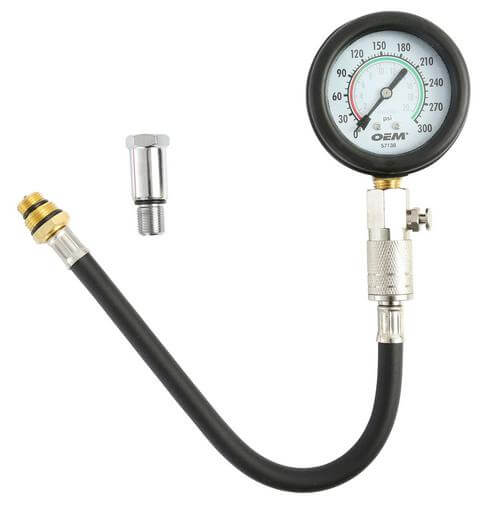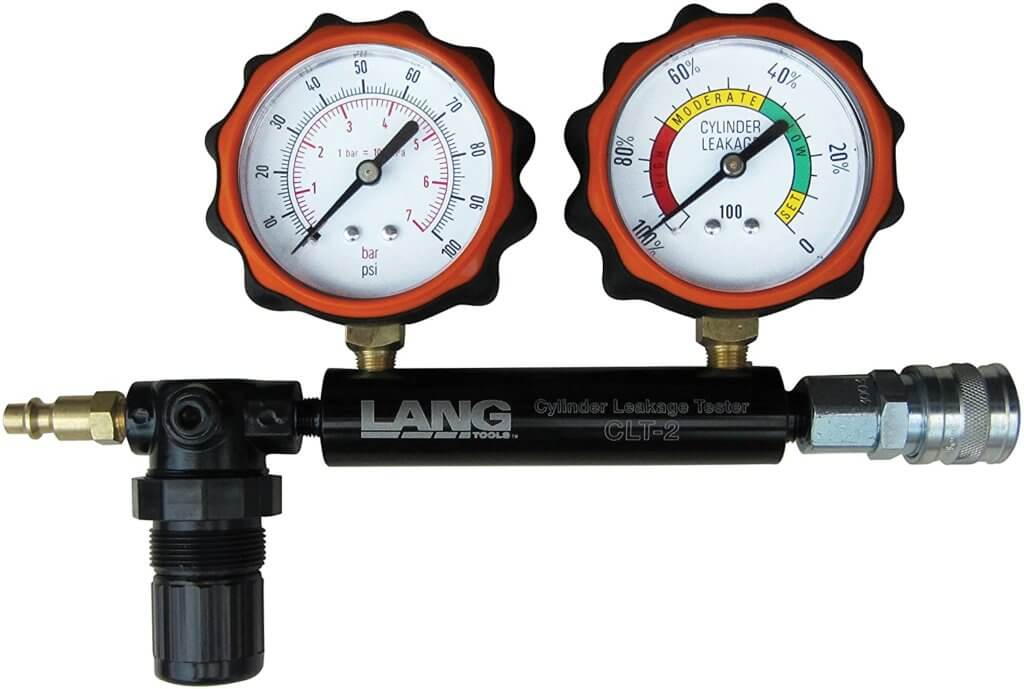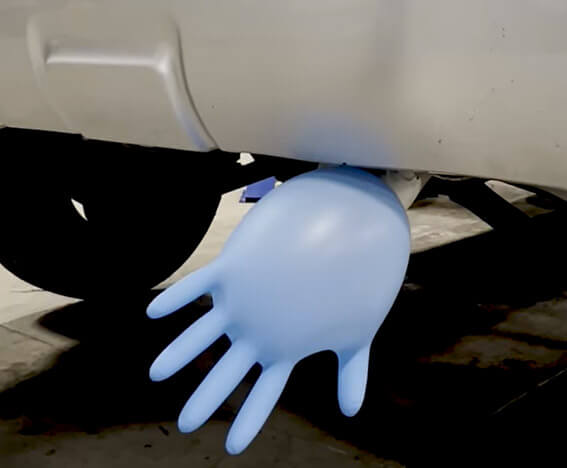Blue smoke from the exhaust — what does it mean?
Blue smoke from the exhaust is a serious problem
When you see blue smoke from the exhaust, it means the engine is burning oil. The problem could be worn piston rings, worn valve guides or worn/cracked valve stem seals.
In older vehicle (pre-catalytic converter days), you could see blue smoke from the exhaust the entire time the engine was running. However, if the vehicle is equipped with a catalytic converter, you may only see blue smoke at startup. Once the catalytic converter warms up to operating temperature, it acts like an incinerator to burn off and clean up the exhaust. So you often don’t see the blue smoke after heat up.
How to diagnose whether the problem is rings, valve guides or valve stem seals
• A wet/dry compression test determines  whether the oil burning problem is ring or valve related— Conduct a dry compression test on all the cylinder and note the readings. Using a pump style oil can, inject about 3 pumps of motor oil into a cylinder and perform another compression test. Repeat the oil injection/compression test individually on the remaining cylinders.
whether the oil burning problem is ring or valve related— Conduct a dry compression test on all the cylinder and note the readings. Using a pump style oil can, inject about 3 pumps of motor oil into a cylinder and perform another compression test. Repeat the oil injection/compression test individually on the remaining cylinders.
If the compression increases with oil, the problem is worn piston rings. If the compression doesn’t rise, the problem is with the valve guides or valve stem seals.
• A leakdown test determines which cylinder(s)  have the bad valves or valve guides. Install a leakdown tester in one cylinder and connect to a compressed air source.
have the bad valves or valve guides. Install a leakdown tester in one cylinder and connect to a compressed air source.
Fit a nitrile or latex glove over the exhaust pipe. If the exhaust valve is leaking the compressed air will fill the exhaust system and inflate the glove. If the intake valve is leaking, you’ll hear the sound of compressed air leaking into the intake manifold.

• Test for valve stem seal leakage. Even a good valve stem seal can leak if the valve guide is worn. But valve stem leaks are most prevalent on older vehicles due to hardening and cracking.
You’ll need a helper in a follower car to conduct this test. A worn valve stem seal will usually produce blue smoke from the exhaust when started first thing in the morning. That’s because the worn seal allows oil to drip past the seal and down the valve guide until the oil pools on the top of the piston. That’s why there’s a cloud of blue smoke on startup.
However, you can confirm even more with this test. Taking advantage of the fact that an engine produces more vacuum when you take your foot off the gas pedal, use this test method. Start the vehicle first thing in the morning. Do not let it warm up.
Take the vehicle for a drive and have your helper follow behind you. Accelerate and then take your foot off the gas. Repeat multiple times. Each time you take your foot off the gas, your helper should notice a puff of blue smoke from the exhaust. This confirms that the valve stem seal has failed. You can try installing new valve stem seals, but if the valve guides are also worn, the new seals will fail and you’ll have blue smoke again.
Fix for oil burning due to worn piston rings
• New or used engine
• Rebuild current engine
• Heavier weight oil will not reduce oil burning due to worn piston rings and can actually accelerate engine wear
Fix for oil burning due to worn valve guides
• Remove cylinder head and have machine shop install new guides or knurl current guides. Install new valve stem seals
• Using a heavier weight oil might slow down oil burning, but also causes additional engine wear
Fix for oil burning due to worn valve stem seals
• Replace valve stem seals.
WARNING: Continuing to drive with blue smoke from the exhaust will result in early catalytic converter failure; an expensive component to replace.
©. 2022 Rick Muscoplat
Posted on by Rick Muscoplat